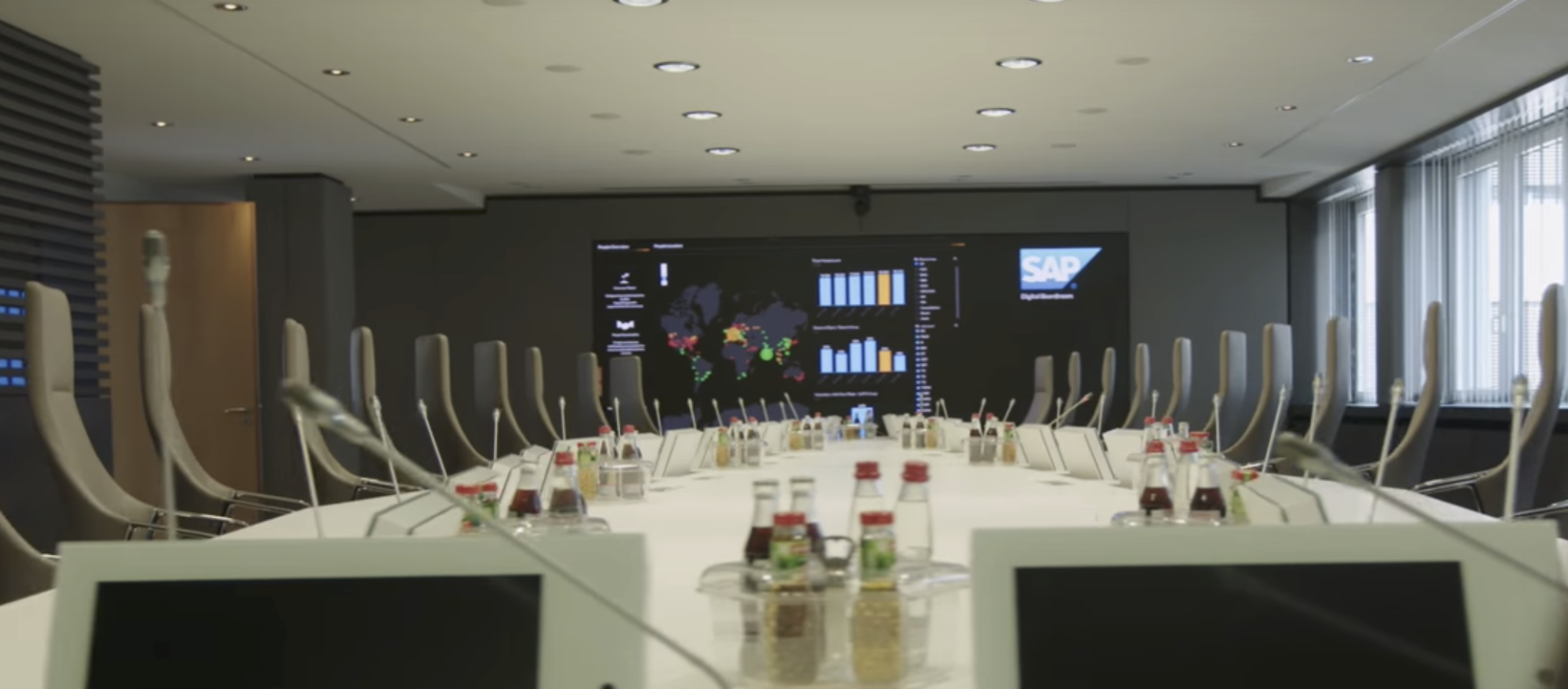Transparency at the touch of a button – Fair Pay Management Circle at SAP
Transparency at the touch of a button
Fair Pay Management Circle at SAP
How can fair pay be measured? What role does certification play in Employer Branding? Can you have transparency at the touch? At the Fair Pay Management Circle in SAP SE’s futuristic digital boardroom, experts and decision-makers from the fields of business, science and politics took a very close look at the state of affairs – and came to an interesting conclusion, in that equal opportunities are still quite rare.
Cheerful employees in summer office wear, excellent coffee in the corner, unusual soft drinks on the tables – the headquarters of SAP DE Germany in Walldorf, Baden-Wuerttemberg is a welcoming place – and a forward-looking one. On one of the upper floors you’ll find the impressive Digital Boardroom: around a large oval table sit bright leather seats on castors with high backrests. At each place there is a small screen, with a wall-to-wall screen at the head of the room and an interpreter’s booth on the opposite side. Normally the SAP board members and supervisory board are seated here, to advise and make decisions.
Not so on this sunny 21st June 2018. In the usual seats belonging to Hasso Plattner and Dietmar Hopp, today experts and decision-makers from the fields of business, science and politics are here to discuss the theme “Certification” at the invitation of SAP and FPI. The setting fits: at Walldorf they have been dealing with internal pay structures and the resolution of the gender pay gap for many years.
As at every Fair Pay Management Circle participation is exclusively by personal invitation, the event itself is subject to Chatham House Rules – the best prerequisite for an open and constructive dialogue. Naturally nothing was relayed that would allow it to be traced back to the people involved or guests, or to their companies or organisations – unless they have explicitly agreed to be identified.
Fair Pay in focus
Today’s Circle covers certifications. What can be measured, and what can be read from the numbers? There is a presentation about EDGE, a procedure which finds answers to these questions and has been implemented by SAP. Also presented was the IT solution which SAP developed in order to provide more transparency, and it ensures admiration and envy within the company: an employee self-service button gives the 22,000 employees information about pay on request, at the touch of a button, and fulfils all the criteria of the Entgelttransparenzgesetz (Law on pay transparency) at the same time.
Transparency is given pride of place in Walldorf. “Fair pay”, says Daniel Holz, Head of SAP Germany, “is essentially in our own interest. It plays a crucial role in the history of SAP and in the future success of the company”. Basically we have to achieve gender equality: “Everywhere women work, the results speak for themselves.”
At SAP they’ve been involved in equal opportunities and gender equality for several years – successfully. This is the best-performing on the German stock exchange. The results of the numerous initiatives can be found in a whole series of indicators – overall, but particularly in the day-to-day business culture. Regarding how diversity works at SAP he has no answers; an SAP colleague advises: “We live diversity all day.”
Pay equity as business culture
A cultural change doesn’t happen overnight, most importantly though the process requires control, says Dr. Heinrich Reiter, Head of Compensation and Benefits at Siemens: “What fairer pay ultimately depends on is the business culture: What makes people tick? In particular what makes them tick unconsciously?” Unconscious bias must therefore be the focus of HR and Management.
The participants were also agreed that cultural change in business is not sufficient in itself. “Career development starts at home”, clarifies the publicist and consultant Martina Lackner. “The relationship with a partner has enormous influence on the course of the working life of women. And men who actively support their wives in private are already on the way to another mind-set in the workplace.”
Finally it’s a question of ensuring a business culture without a glass ceiling – whether for mothers or women without children. Already, strategy meetings at 5pm are no longer the norm and the greater flexibility makes it easier for many. And so in the end consensus in the company prevails: no matter how we measure wage justice and gender equality – just when we want more women in leadership positions, the men are in demand. For the forward-looking Digital Boardroom, this leap is one for the outside world to make: “Fair pay and diversity are not gender issues” says Cawa Younosi, Personnel Manager at SAP Germany, “but a business issue.”
If you yourself would like to take part in a Fair Pay Management Circle or would like to recommend an expert or company representative we should invite, please write to us or give us a call!
We cordially thank Lynn Everson and her team at Lifeline Language Service for their generous contribution of translating this article.
FPI - What we do
Why does the gender pay gap prove so intractable? What is standing in the way of fair pay for all? What do companies need to do in order to put sustainable pay strategies into practice?
LEARN MORE
Companies
Knowing about the pay gap and being willing to rid the world of the unjust state of affairs are evidently not enough to actually ensure fair pay.
LEARN MORE
Best Practice wanted
We are firmly convinced that pay equity could be possible tomorrow – if everyone wanted it. That is demonstrated by those companies where things are already fair(er).
LEARN MORE



